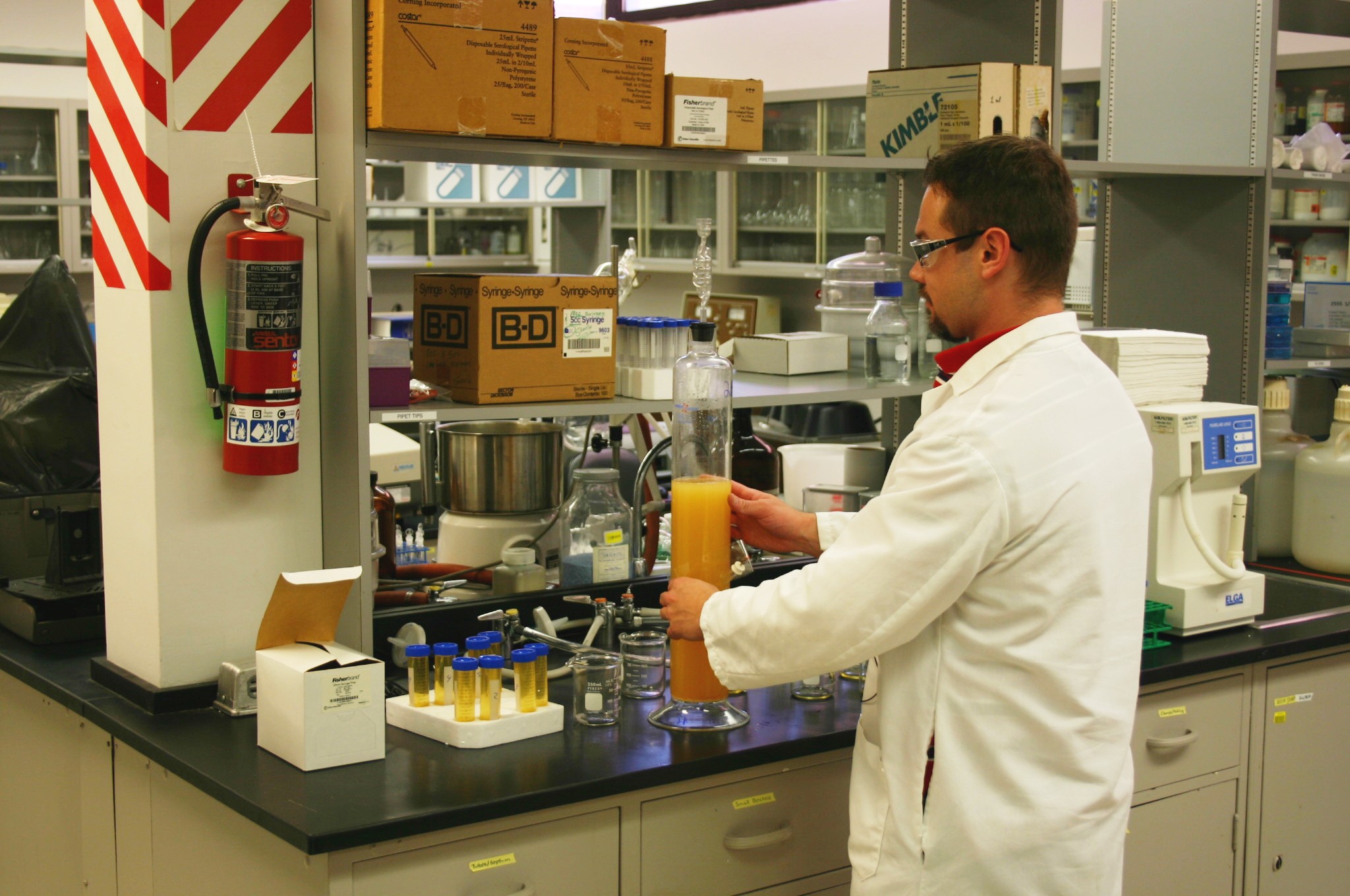August 17, 2013
Brewmaster Blog: Brewing Science Edition

Hello, I am Peter Wolfe, and I am a brewing scientist at the Anheuser-Busch Technical Center in St. Louis. Brewing science is the bridge between the ancient art of Zymurgy and the modern practice of brewing. Brewing has long been both an art and a craft, but it was brewing scientists that shed light on all the mysterious processes and reactions that occur when the practice of that craft transforms barley into beer.
Brewing science really began in the mid 1800s. Brewing science in the United States has a wonderful history and was the primary motivator for the development of refrigeration. Modern microbiology was also jumpstarted by brewing science - Anheuser-Busch was the first brewer to use the process of pasteurization, which allowed shipment of beer via railcars back in 1870 (a previously unheard-of proposition due to spoilage). The brewing scientists at Anheuser-Busch participate in the American Society of Brewing Chemists, which has been the premier U.S. organization for researching brewing, barley and hops related subjects since 1934. We collaborate with other brewing scientists at major breweries, regional breweries and tiny craft breweries alike, always looking to improve our methods of analysis or share advancements in the field.
So what is a day in the life like for a brewing scientist? First of all, I should mention that our primary job is to support the breweries. Our focus as a group is to make the brewery run better and to continuously improve; we want the beer to be the best it can be. To that end, we conduct routine analysis to make sure the raw materials (malt, hops, water, etc.) we're getting are up to snuff. We also tackle challenges as they come up; sometimes something as seemingly simple as seasonal variation in water supply can introduce changes in yeast behavior.
We also innovate. If the brewing team comes to us with a challenge, sometimes our job is to figure out a new way to think about old practices. A great example is dry hopping. Many people love beers with the rich hop aroma that comes from adding hops later in the brewing process after the boil kettle. Two hundred years ago, it was common in the U.K. to add hops to a wooden cask of beer and ship it off to the pub like that. It generally doesn't work in modern kegs and tap systems, so many brewers will add hops to their finishing tanks instead to achieve the same affect. However, Anheuser-Busch finishing tanks are so large that the seemingly simple task of adding and removing hops to a finishing tank becomes extremely difficult. The brewing scientists at the Technical Center, myself included, have made great progress in figuring out ways to modernize the process without compromising the heritage or flavor that the dry hopping process brings to a beer.
At the end of the day, we provide data that helps the brewers practice their craft. The penultimate test of that craft is how the beer tastes when we try it (and the ultimate test is when you try it!). In my next blog, I'll discuss sensory science and give you a glimpse of how and how many times a beer (and the water and grain used to make it) gets tasted before it's deemed worthy to be released for our customers.
Press Contacts
Media@anheuser-busch.com is a single point of contact for journalists. If you are a member of the press and have an exclusively news-related inquiry, please direct it to this address. For other questions or requests, please click here.